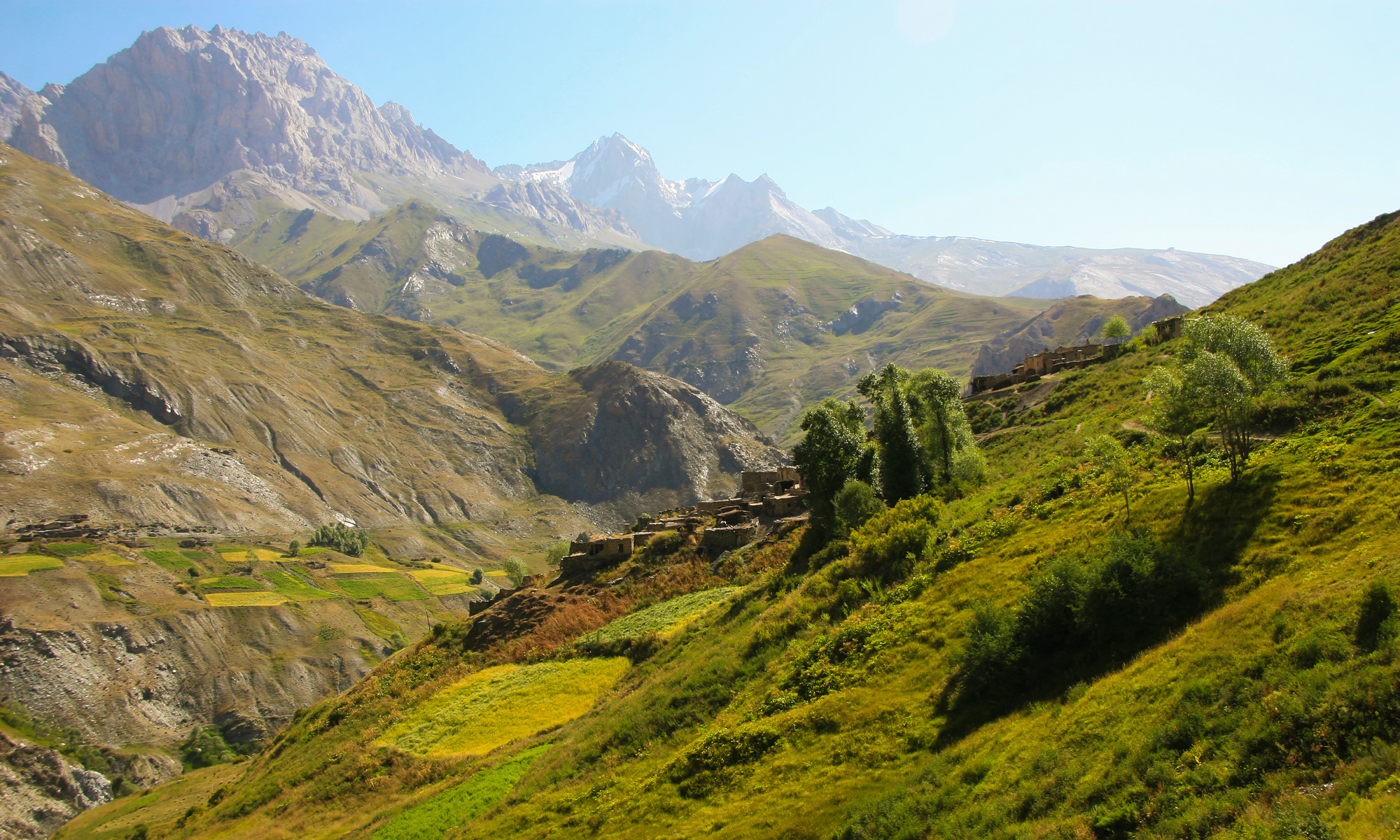In recent decades, a number of Yaghnob’s perennial springs and small streams have run dry, a phenomenon driven by accelerating climate shifts, soil erosion, and degraded land management systems. Where names remain on villagers’ tongues, water no longer flows.
In Yaghnob, the disappearance of a spring is not just a hydrological loss—it is a rupture in social cohesion, environmental integrity, and intergenerational knowledge.
During interviews and fieldwork across the valley, elders spoke of familiar sources—springs that once watered flocks, fed gardens, or offered respite on long migration routes:
-
Ob-i Nasr – once named after a revered elder, now dry for over a decade.
-
Chashmai Panjshanbe – “Thursday’s Spring,” believed to heal ailments, now reduced to mud and memory.
-
Obi Safed – the “White Stream,” once used to wash wool and infants, now replaced by a grueling two-valley water trek.
Each place-name endures as a linguistic relic, but its environmental anchor is gone. The hydrological systems have fractured; the springs no longer mark space or sustain life.
The decline of Yaghnob’s springs is part of a broader ecological unraveling, driven by both climate and land-use pressures:
-
Decreased snowpack and glacial retreat have reduced annual meltwater, particularly in late spring.
-
Summer precipitation is increasingly erratic, shortening the replenishment window for shallow springs.
-
Overgrazing near springheads leads to soil compaction and erosion, impairing groundwater recharge.
-
The collapse of traditional terrace farming systems, once used to manage runoff and prevent washouts, has further destabilized soil-water cycles.
-
Unregulated returnee settlements sometimes unintentionally tap or divert small spring flows for irrigation or household use.
According to Tajik hydrological surveys (2009–2015), Yaghnob is now recognized as an area of “micro-watershed fragmentation,” with multiple springs marked as seasonal or “intermittent dry.”
The consequences of drying waters are felt not only in livelihoods and logistics—but in identity.
-
Increased water-fetching burdens, especially on women and girls, limit time for education and income-generating activities.
-
Loss of communal gathering spaces, often located around springs, diminishes opportunities for oral storytelling and collective memory.
-
Place-based names and rituals once tied to sacred springs fade into abstraction—still spoken, but no longer lived.
-
Traditional ecological knowledge weakens, as youth grow up without direct contact with the water systems their ancestors named, described, and protected.
This is a cultural drought, in which language and landscape begin to decouple. The words survive—but the water is gone.
Some Yaghnobi community members have proposed spring conservation and reforestation efforts, with the help of NGOs and academic partners. These include:
-
Rebuilding terrace systems to reduce erosion and improve water capture.
-
Mapping and documenting remaining springs before they disappear.
-
Creating protected zones around the most fragile sources, possibly integrated into Natural-Ethnographic Park efforts.
-
Including water sites in cultural tourism and youth education, to reconnect names with living places.
To stand beside a dry spring in Yaghnob is to feel a particular kind of loss. The ache is not just for water, but for the gatherings it once sustained, the proverbs it inspired, the livelihoods it anchored.
Yet water’s silence is also a call to action.
Protecting what remains requires not only technology and funding, but a deep respect for the knowledge already carried in local memory. Conservation here is not about restoring a pristine past—it is about building resilience in place, with the people who have long listened to the rhythms of the mountain.
